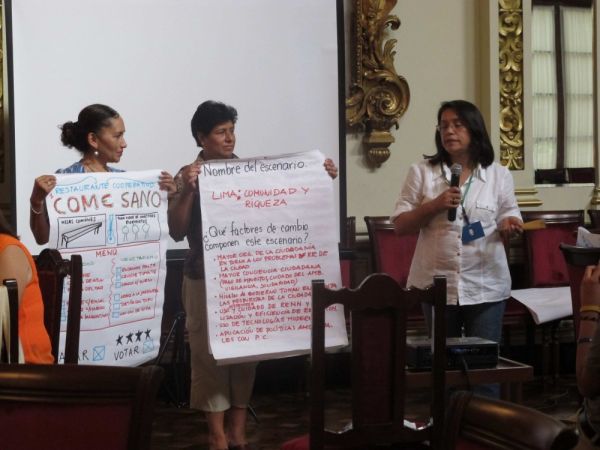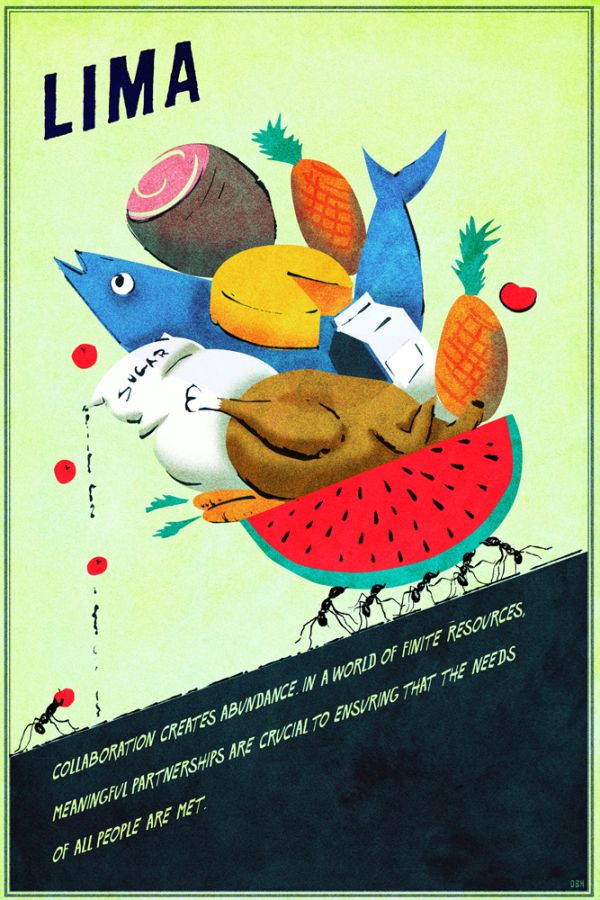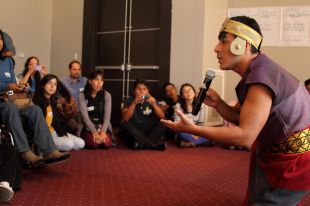Will Lima’s Future Citizens Compete for Resources or Organize to Maximize Them?

The Futures Scenarios workshop in Lima. Photo credit: Manuel Vigo
As the Informal City Dialogues moves toward its “Embracing the Informal City” conference in September, each week we will present summaries of the scenarios created in the six participating cities. These scenarios were created in multi-day workshops planned and conducted by Forum for the Future in conjunction with FORO Nacional Internacional in Lima, and with support from The Rockefeller Foundation. The outputs were collaboratively envisioned by a wide range of actors, from informal settlers and street vendors to urban planners and government officials. The following is an excerpt from Forum for the Future’s report on the scenarios developed in each city, which will be published in September. Click here to read more about how the futures scenarios process works.

LIMA
Resource availability and citizen participation: The trajectories of these two forces — and how they intersect with each other — will play major roles in determining what Lima looks like in 2040. The summarized scenarios below imagine four different futures based on these forces: One in which resources are dwindling, but citizen self-organization helps mitigate the scarcity; another in which the city has created its own resources through infrastructure and communication networks; yet another where ample resource availability fails to keep residents from leaving the city in search of better opportunities; and finally, a future in which resources are controlled by the elite, leaving the rest of the city to fend for itself.
Solidaridad para avanzar (Solidarity for Progress)
In 2040, the effects of the over-exploitation of Lima’s resources are obvious: poor soil quality, water and energy shortages, and a reduction of public space. To counter these problems in the absence of strong state institutions the population has self-organized, with some assistance from the government. Informality has become a lifestyle choice but people are unsure of how to integrate it with existing mechanisms and institutions.
Comunidad y riqueza (Community and Wealth)
In this scenario, Lima has expanded vertically and public spaces have multiplied. Large infrastructure construction has endowed the city with resources such as communications networks, environmental services, and improvement of its surrounding valleys. Civic participation and policymaking have been led by an organized middle class that leverages new communications technologies to promote its economic interests.

Aporta para el orden y sostenibilidad (Chip in for Order and Sustainability)
In this world, Lima in 2040 has plenty of resources, managed rationally by the city, but the young and talented are leaving for other cities. Order and sustainability are the principal public goods—which citizens strive to maintain at any cost. There is a crackdown on informality through regulations and legislation. This raises the cost of doing business and impels talented people to move elsewhere.
Yo mismo soy para surgir (I Can Succeed on My Own)
Lima’s vital resources in 2040 are controlled by private companies comprising an elite that also holds the political power. The masses are pacified with populist measures. Informality is associated with a precarious lifestyle but one in which everyone manages to take care of their own daily subsistence. Residents of the city pursue their individual wellbeing at the expense of the commons.









